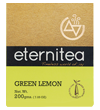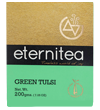Process
The ritual of plucking the famed two leaves and a bud is monitored with utmost stringency, for this is where quality tea is born. The estate harvesters are provided with special training on implementing the “choicest plucking”, a concept by which only quality input is allowed to the production facilities.
The leaves collected at the factories are then withered by the passage of air by axial flow fan where the tea leaves lose 30% to 45% of their moisture on the withering troughs for up to 12 to 16 hours.
The leaves then pass through either of two production processes, Orthodox and CTC or cut, tear and curl, depending on the nature of the final product desired.
In the CTC method of manufacture, the withered leaf is fed into a Rotor vane which crushes the leaf by building pressure in itself. The crushed leaf is then fed through a bank of CTC machines. During this process, the crushed leaf is first cut into small pieces. Then, the cells in the leaf are ruptured and exposed by a tearing effect and finally, cut pieces are curled to give a grainy texture.
The next stage in the CTC manufacture is Fermentation, which is a process of oxidation. The cut leaves are fed into a fermentation drum and rolled. It is during fermentation that certain characteristics of the tea such as briskness, brightness, color, and hardness are developed.
The penultimate stage of CTC manufacture is the drying process. The main purpose of drying is to arrest fermentation. Hittakkal uses the program logic controlled Kilburn vs-dd4 dryer and the Camlin Vibro Fluid Bed dryer, the best drying systems available.
Finally, the dried teas are sorted, cleaned, and graded by passage over electrostatic fibre extractors and wire meshes of different apertures. The graded teas are now ready to be packed.
The first among the packed black tea to be rolled out from Hittakkal is the prestigious “Mystic Bud”.
Tea Leaf Quality
When describing the size of tea leaves and their origin, a term called OP, or Orange Pekoe is used. Orange refers to the Dutch noble House of Orange-Nassau, which brought tea to Europe during the 18th century. While, Pekoe refers to the top bud of the tea plant. To be classified as Orange Pekoe, the tea must be composed purely of the top two leaves and bud of the tea plant. This aspect is religiously followed in our products thus giving it the signature smooth yet rich flavor.
Rich Flavour
- After being picked, tea leaves are placed in meshes to sort out their sizes. Fuller leaves stay in the top meshes while broken or crushed leaves (“Broken Orange Pekoe”) fall to the bottom
- The tiny remnants of the sorting and/or crushing process result in fannings (because they are ”fanned” away) or dust (swept from the bottom). Because the surface area of these particles are smaller, tannin (natural in tea) is released quicker (after 1-2 minutes) often resulting in a bitter or astringent taste
- A larger leaf has a broader surface area and thereby can be steeped longer before tannin is released (3-5 minutes). This results in a rich, fuller, and smooth flavor
- 90% of tea bags are made of dust or fannings while Eternitea tea bags are made of more premium quality tea leaves
Awards and Accolades
Hittakkal has bagged 'The Golden Leaf India Awards' (2005, 2007, 2009, 2014) instituted by United Planters Association of South India (UPASI) in both South India Bought Leaf Sector and Nilagiri Estate Sector categories.
It is a matter of great pride that Hittakkal has been winning this award consecutively for three years since the date of inception.
Hittakkal also holds the status of being the first Bought Leaf Group to earn the ISO 9001-2000 certified by DNV-Neatherland.















